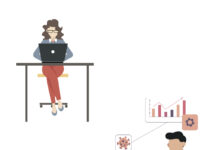Plastic pollution is choking our oceans. Since 2015, there has been a massive movement to switch to alternatives for our day-to-day single-use plastic items including straws, bags, bottles, containers and cutlery. Plastic straw alternatives have become increasingly popular, but are the alternatives really that much better?
Why Plastic Straws are a Problem
Plastic straws are a single-use plastic which make up 0.025% of the 8 million tons of plastic which flows into the world’s oceans every year. They quite literally suck. Like all plastics, plastic straws are not biodegradable, which means that they do not naturally break down in the environment. They are also difficult to recycle after use. Not many recycling facilities accept straws and if they are accepted, they are so small that they may be removed and sent off to a landfill.
Once in the ocean, whether transported by anthropogenic or natural means, plastic straws may be consumed by wildlife mistaking plastic for food. As they do not biodegrade, straws may stay in their stomachs until death. They may also affect wildlife through entanglement. In 2015, a video of a sea turtle having a plastic straw removed from its nose surfaced and contributed to more media attention around the issue of plastic straw use.
Plastic straws and debris from straws may also accumulate in the ocean and form garbage patches with other plastic waste, contributing to “plastic islands” such as the Great Pacific Garbage Patch, which floats between California and Hawaii. Debris can also prevent sunlight from reaching algae and plankton on the water’s surface and may stop them from transforming light into essential nutrients, which may further impact the marine food web.
The Alternatives, What Makes Them “Worth” It
In a video by Now This Earth, Lucy Biggers interviewed Takunda Chitaka, a postdoctoral research fellow at the University of the Western Cape in South Africa, who focused her thesis on researching alternatives to single-use plastic straws.
Stainless steel straws are perhaps the most frequently used reusable alternative to single-use plastic straws. Chitaka notes that they are also less likely to be littered and end up in the ocean. However, with the mining, refining, and shipping required in production to make this alternative viable, a single stainless steel reusable straw needs to be used 37 times. This is known as the break-even point and Chitaka describes it as the point in which an alternative eclipses the impact of the original product or material.
Paper straws are another widely distributed alternative to plastic straws as a biodegradable, single-use option. While they may be a greener option, they are not a one-and-done solution. Chitaka explains that these straws have a short lifespan, as in the time it takes to have one drink, you may require more than one paper straw, as they get wet and soggy very quickly. This defeats the purpose of the alternative, and Chitaka reasons that you might as well use a plastic straw and ensure it gets properly disposed of, rather than consume more than one paper straw for one drink.
Chitaka’s conclusion is that glass straws are the ideal reusable alternative to single use plastic straws. This is mainly to do with their break-even point, which is 23 times for one single-use straw. Seemingly the only disadvantage here is that they may break, though they have been known to last for at least 40-100 uses before becoming degraded.
Overall, Chitaka says that the ideal alternative for you will depend on your lifestyle. If you use straws often and remember to bring an alternative with you when you leave your home, then that’s a good option for you, but if not, it may just be better to go without.
Why We Still Need Straws and The Problem with Plastic Straw Bans
The obvious ideal alternative is to ditch straws all-together, reusable or not. However, that doesn’t work for everyone, and this is the intersectionality of the issue. Many people with disabilities require single-use plastic straws to drink and eat. The alternatives are not necessarily accommodating to everyone, whether it be that they are temperature sensitive, dissolve quickly, or just aren’t comfortable.
This is also where plastic straw bans and other bans on single-use plastics have the right intentions but may be ineffective solutions. Instead of banning products, many encourage governments and businesses to invest in alternatives and systemic change to redesign plastics and improve recycling infrastructure.































